
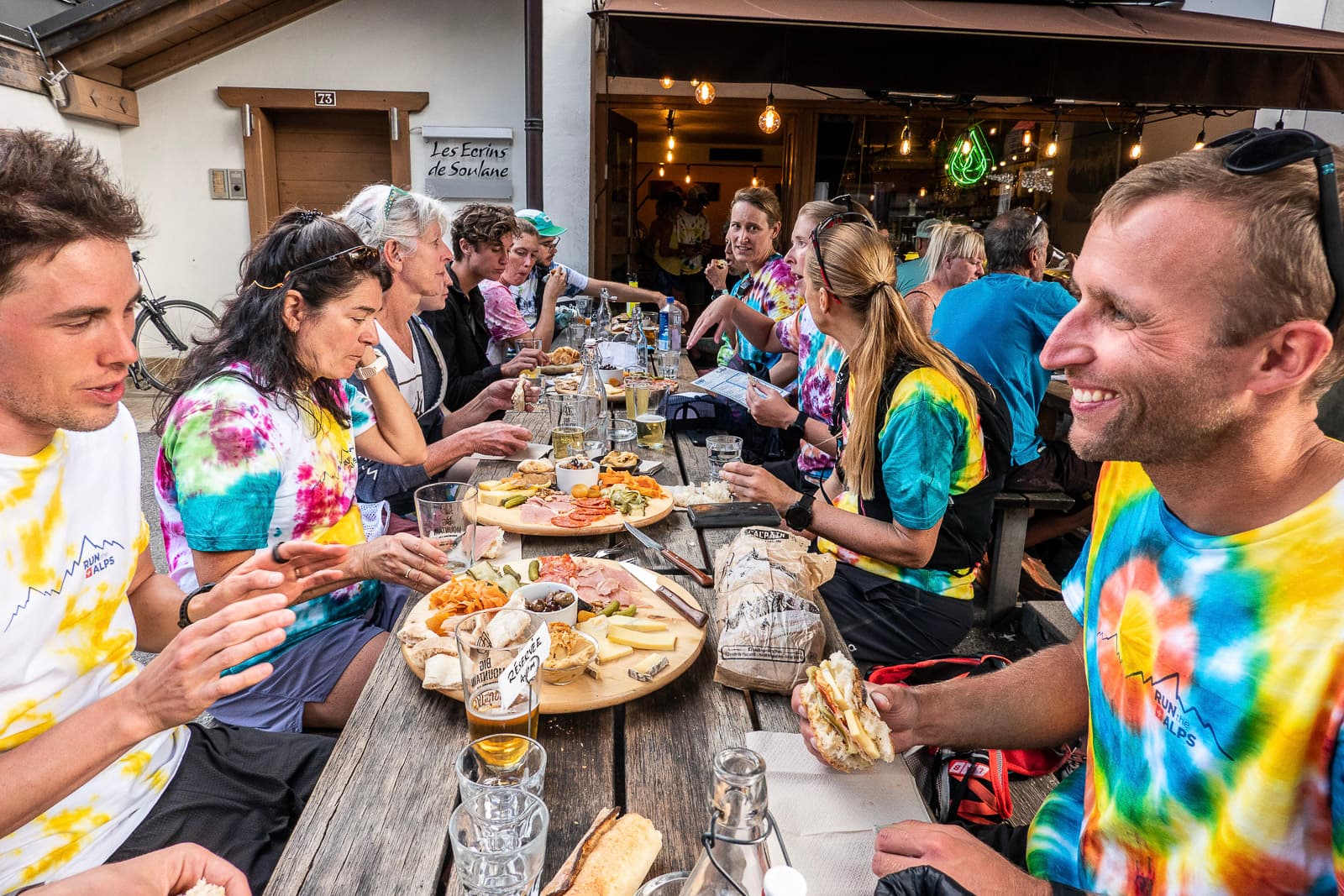
Eat Your Way Around the Alps: Vegan, Vegetarian, and Gluten-Free
One of the best parts of trail running through the Alps is the refueling!
Some of our favorite European trail treats are chocolatey French croissants (perfect for tucking into your running pack), fruity Italian gelatos (less portable), and cheesy Swiss fondue (not running vest friendly). Even in the mountains, there is an abundance of fresh vegetables, Alpine berries, and locally-produced cheeses.
Run the Alps staff, guides and friends have had the privilege of eating our way around the Alps, and we promise that it doesn’t disappoint!
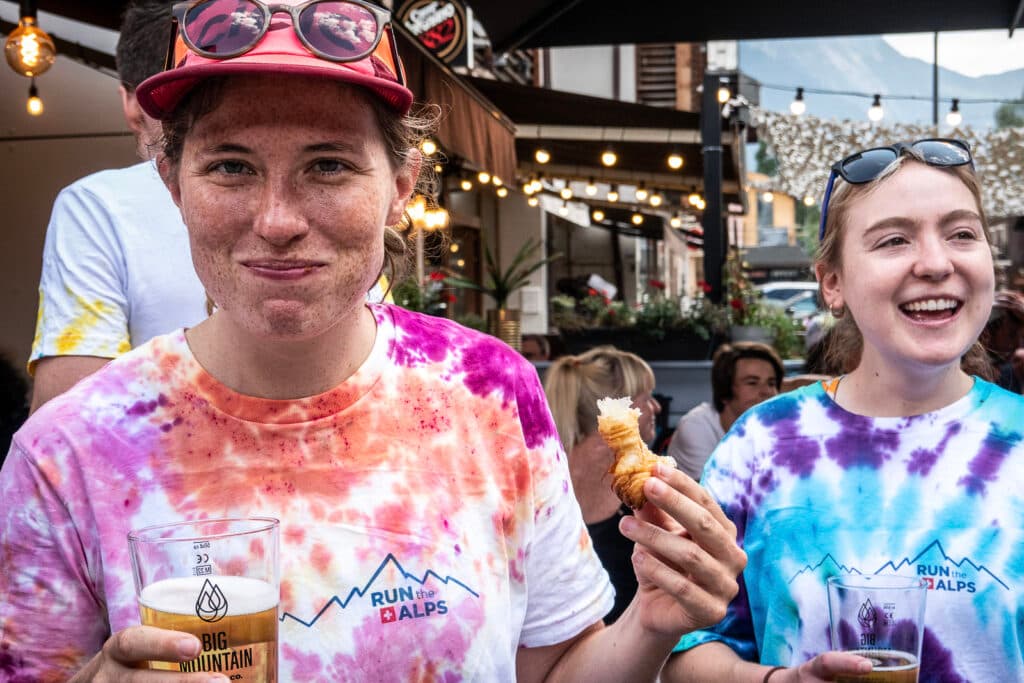
However, some of us have dietary restrictions for medical or ethical reasons. What then? How do mountain huts, village inns and restaurants in France, Italy and Switzerland handle someone with, say, a vegetarian, vegan, or gluten-free diet? Or, a specific allergy?
We frequently get these questions from our Run the Alps trip guests, and we want to share our experiences and a few answers. To provide the most accurate information, we’ve consulted with our guides, staff and trail running athlete friends around the Alps.
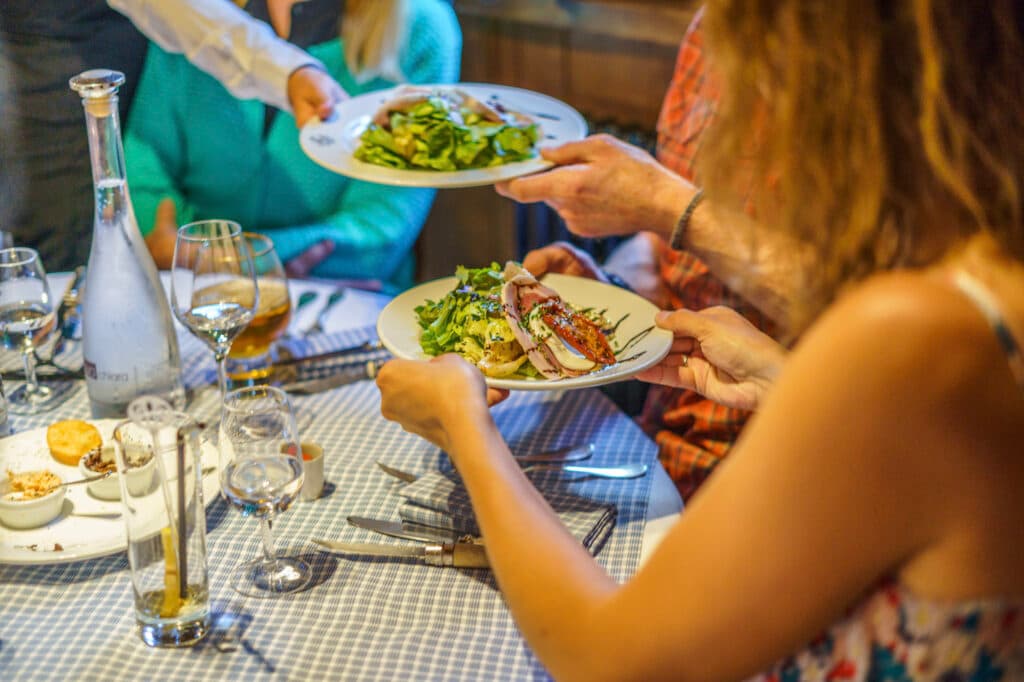
I have specific dietary restrictions. Will restaurants, hotels, and huts accommodate them?
In the past, the Alps were known for being a bit unfriendly about food preferences, but these days, you can find a variety of options for whatever your dietary needs might be. Our biggest tip? Plan ahead. Hotels and huts are willing to accommodate special requests if they are received in advance, but they cannot make last minute changes.
When you book your trip, let hotels and inns know of your dietary constraints when you make the reservation. Then, confirm it in person as soon as you arrive. If you are coming on a Run the Alps trip, please let us know if you have allergies, food preferences, or other needs.
We receive a lot of different requests and nearly all dietary needs can be accommodated– but we need to know before your trip starts. Meal adjustments can be made for everything from allergies, to intolerances, to personal preference.
Be as specific as possible, especially if something is off limits for you – the more information you provide, the better your needs can be accommodated. We want to make sure you’re eating meals you enjoy!
One important note: It’s difficult for huts and restaurants to make changes after they’ve received a request to accommodate special meals. Our advice is to decide before you arrive at your hotel or hut, and then stick to that request. Every now and then, we see a hut guest who has made a dietary request, but then is tempted to loosen his or her restrictions when they see what’s on their friend’s plate. It’s certainly understandable– there are a lot of delicious meals in the Alps! But it makes menu planning and food preparation nearly impossible for small inns and huts. For many huts, food delivery is very difficult, and their supply on hand is limited. So please, take a moment to plan in advance, and give a thought for the people preparing your meal. They’ll appreciate it.
If rural huts have limited access to food options, will they be able to make changes?
In general, the more traffic a hut receives, the more likely they are to cater to dietary restrictions. The huts along the Tour du Mont Blanc (TMB), which receive a steady flow of visitors, will be much more accustomed to adapting their menu to specific needs. This becomes increasingly challenging as you veer off the beaten path to lesser-known or -visited huts.
What does this mean for you? If you are staying at one of these small huts or a very small inn in a remote hamlet, and you have a dietary constraint, your meal may be very basic. The chef is doing the best, sometimes with few choices on his or her end. Be understanding, and know that you might be trading, for example, a tasty gluten-free meal for a once-in-a-lifetime view.
While dining at the huts, food is served family style. To avoid unwanted waste, they will serve a portion size for everyone at the table. But don’t worry, you can always ask for more if you are still hungry.
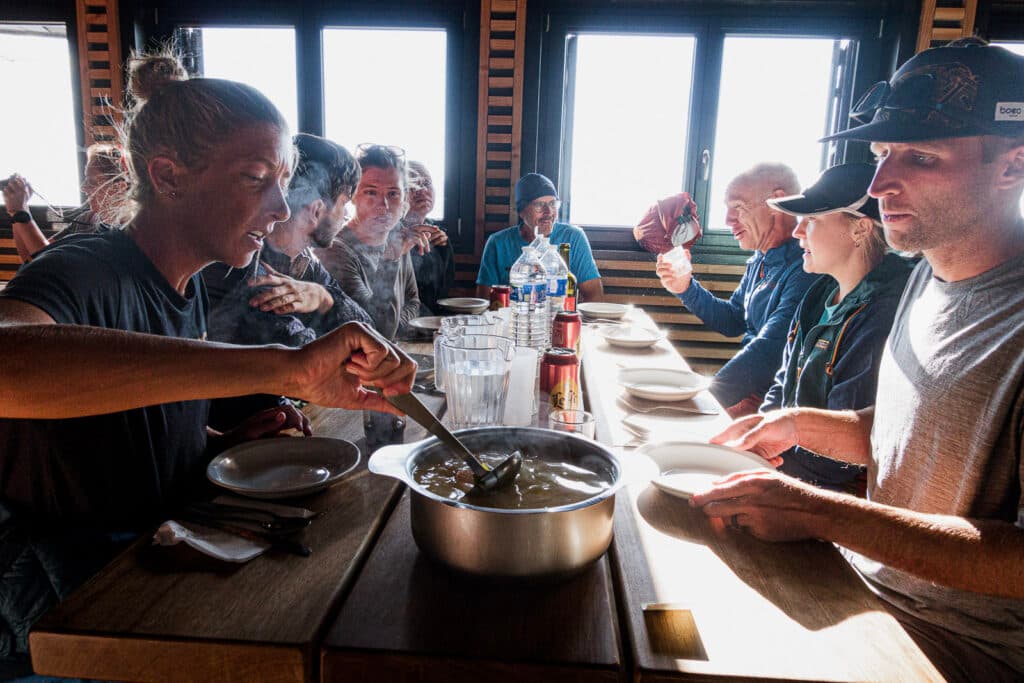
Is it possible to eat Vegetarian or Vegan in the Alps?
Yes. Along with the traditional meat-filled dishes you might associate with the cuisine of the Alps, these days, fresh veggie meals are easy to find. The huts can make entirely vegan or vegetarian dining options if you let them know in advance. In the case of Run the Alps, many of our guides eat vegetarian or vegan.
It wasn’t always this way. Thoughtfulness about dietary restrictions and meal planning has come a long way in the Alps, in the last decade or two. Run the Alps’ Doug Mayer remembers the early days. “I’ve eaten vegetarian for decades now,” he says. “And once at a Swiss hut that will remain nameless, my meal was lettuce, a potato, and a half kilo of cheese. I think they were just out of both supplies and ideas!”
Cheese is abundant in both French and Swiss cuisine. This makes eating vegetarian easier than eating vegan, although the latter certainly is possible. Most restaurants offer a few vegetarian options and will have at least one vegan option as well.
That said, some traditional treats happen to be vegan – some sorbets and gelatos even! And non-dairy milks have become much more available. It’s always a good idea to ask.
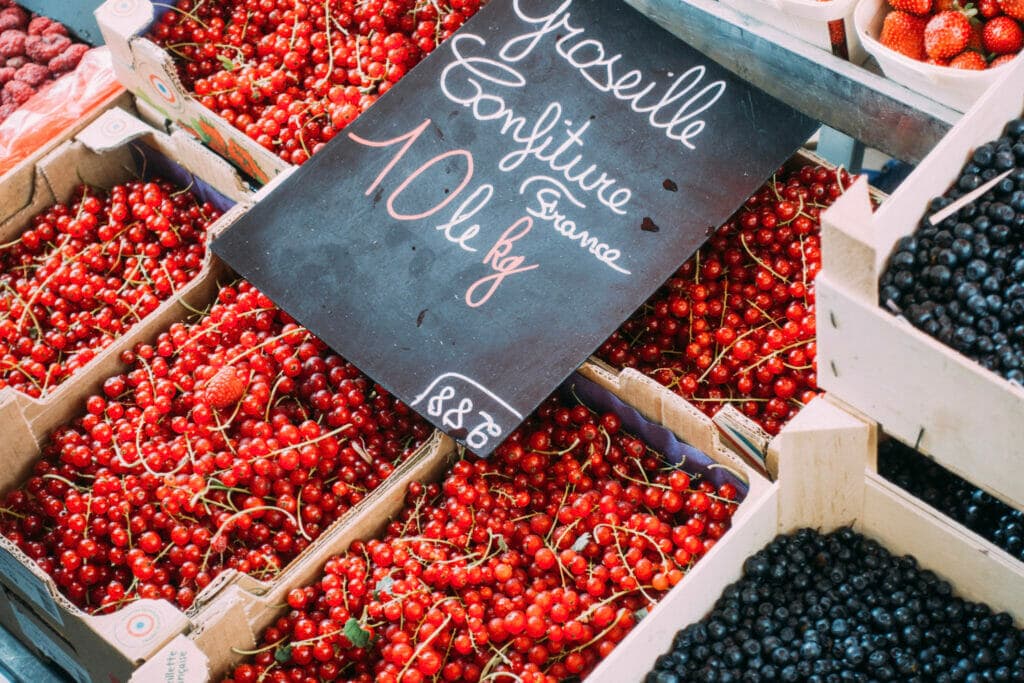
Will there be enough protein for me if I’m not eating meat?
“Beans, lentils, chickpeas, and sometimes tofu or quinoa are the usual sources of protein you’ll be served at huts and restaurants in the Alps,” notes Run the Alps Content Producer, and long-term vegan, Kim Strom. “That can provide enough protein to keep you going, but on big running days, I’ll also bring some extra: Tailwind Recovery (10g complete protein), Trail Butter (5g), or a variety of protein bars.”
If you are concerned about not getting enough from regular meals, we suggest bringing your own protein powder or protein bars with you. They can fit easily into your running pack and are always good to have on hand.
I’ve heard that the definition of “red meat” is different in some parts of Europe. Is that true?
In some places in the Alps, red meat is understood differently than in much of the rest of the world. Often, red meat specifically pertains to cow meat, which means you might be given lamb or pork even if you specify a red meat restriction.
If you do not want to eat any meat, or if you are okay with chicken or fish but not other meats, it is best to clearly state this upfront when you arrive at your hotel or hut.
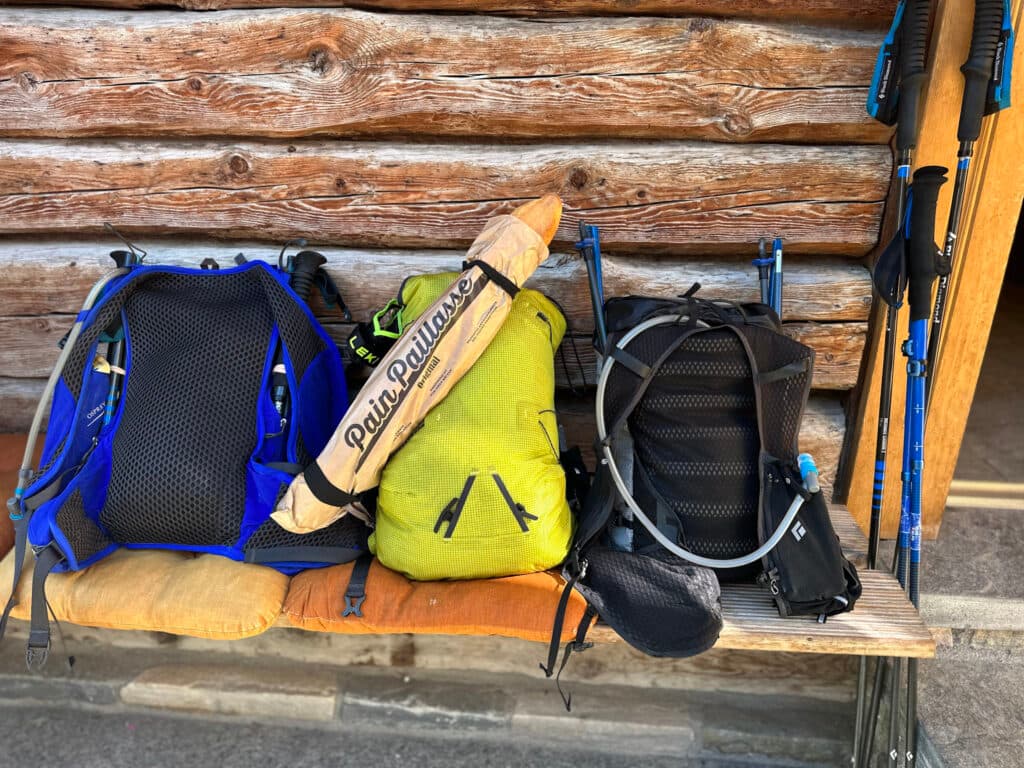
Is it possible to eat gluten free?
Europe is known for its love of cheese, wine and lots of freshly baked bread. For gluten free, intolerant, and celiac athletes, traveling to Europe takes a bit of planning. We asked Hillary Gerardi for advice. Hillary is Run the Alps’ Director of Social and Environmental Responsibility, and eats gluten free on her mountain adventures. Here is what she said.
“The concept of eating gluten free has varying degrees of understanding in Europe. Especially in France, the idea of gluten free or celiac is often misunderstood. Try to be very clear when explaining your gluten restrictions to avoid any confusion.”
Grocery stores in France, Switzerland, and Italy will have a small selection of gluten free items that you can bring with you in your running pack.
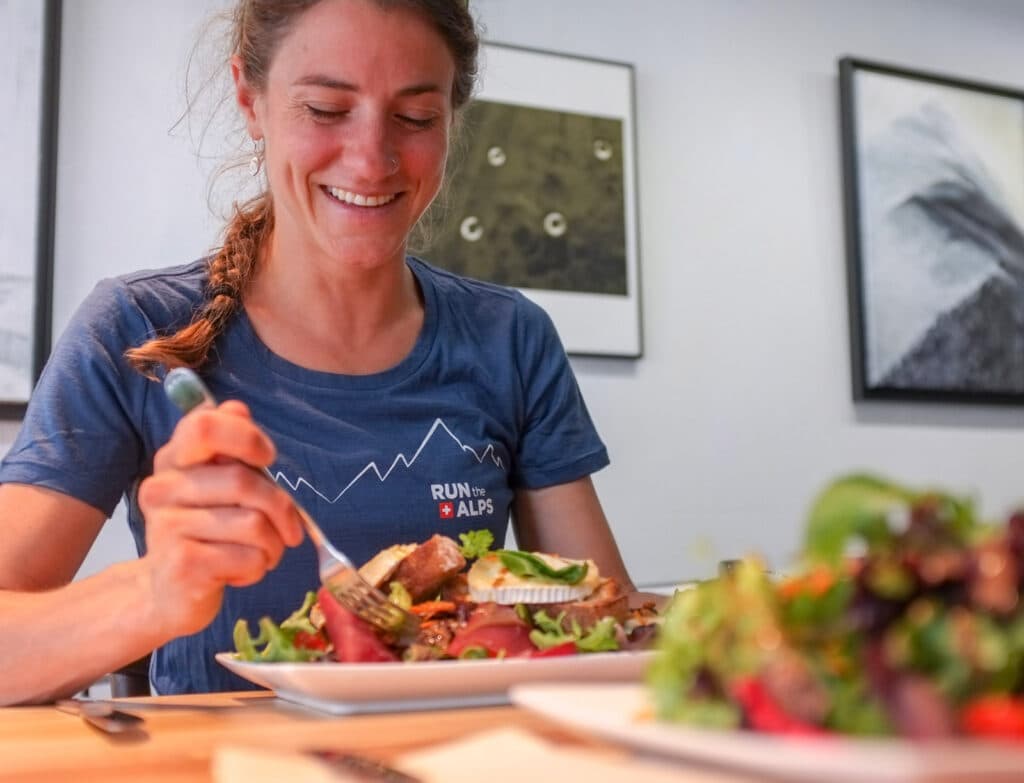
Gluten Free Recommendations
If you are looking for a post-run beer in Chamonix, our favorite microbrew stop is at Big Mountain, which offers a gluten free pale ale. If you’re hungry, Bizes restaurant has a selection of gluten free options, and Joia pizza can do a gluten free crust. For an afternoon pastry in Chamonix, Shouka has a variety of gluten free desserts, plus an extensive selection of organic chocolate and cacao.
Recently, several new gluten-free options have opened around town. One standout is Yumidori, a restaurant specializing in sushi and Japanese cuisine. With the exception of its curry, the entire menu is gluten-free. Impressively, Yumidori’s sushi chef was even named runner-up at the prestigious World Sushi Championship.
Stories and Beer is Chamonix’s newest (and only) taco joint that offers a gluten-free friendly menu. They make their own corn tortillas with a press.
On the Italian side of the Alps, despite being known for considerable consumption of pasta and bread, we have found eating gluten free to be quite easy. Italy has a high rate of celiac disease and it is widely understood, with gluten free options often identified on the menus themselves. Besides grocery stores in Italy, try the pharmacies – they often have a small section dedicated to GF options.
At Swiss grocery stores, you can often find gluten free options and products. But you may not have to look any further than your dinner plate. Many traditional Swiss dishes are already stacked with gluten free options, such as Switzerland’s favorite combo, potatoes and cheese.
Our pro-tip: an app called Find Me Gluten Free. This free downloadable app gives you access to gluten free eating options anywhere in the world. With an easy-to-use map that lets you navigate where your closest gluten free options are, so you never have to worry about your next meal!
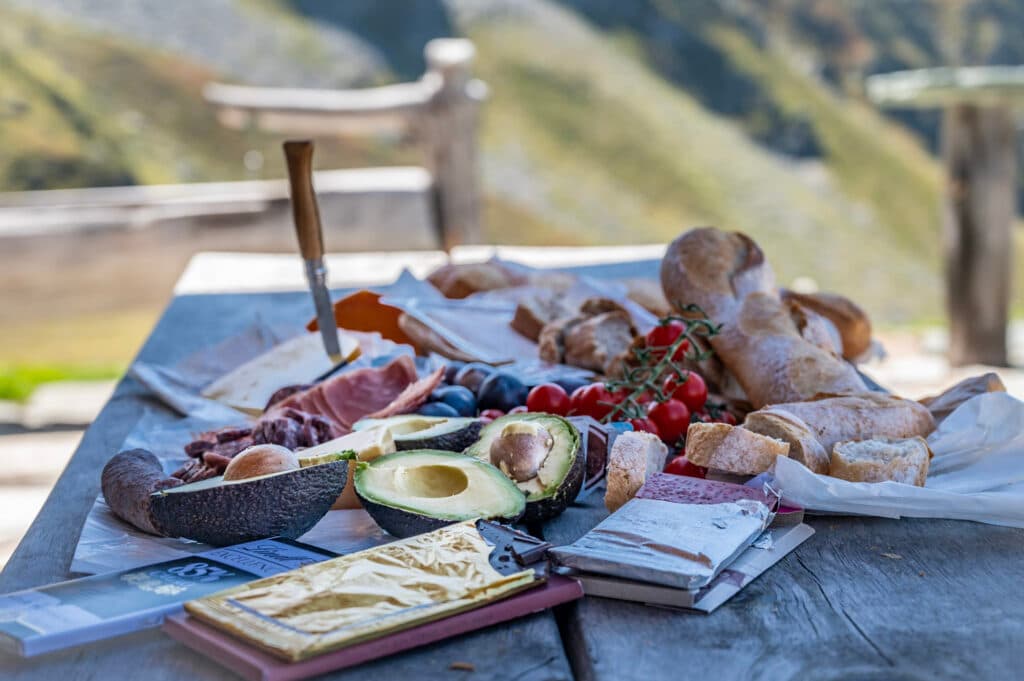
For More Focus on Food
Many of our guided and self-guided tours are based in Chamonix, or start and end there. If you’re going to be in Chamonix as part of a guided or self-guided tour, visit our Trail Runner’s Underground Guide to Chamonix for restaurants and eating recs in town! We can also recommend The Best Cafés in Chamonix, France.